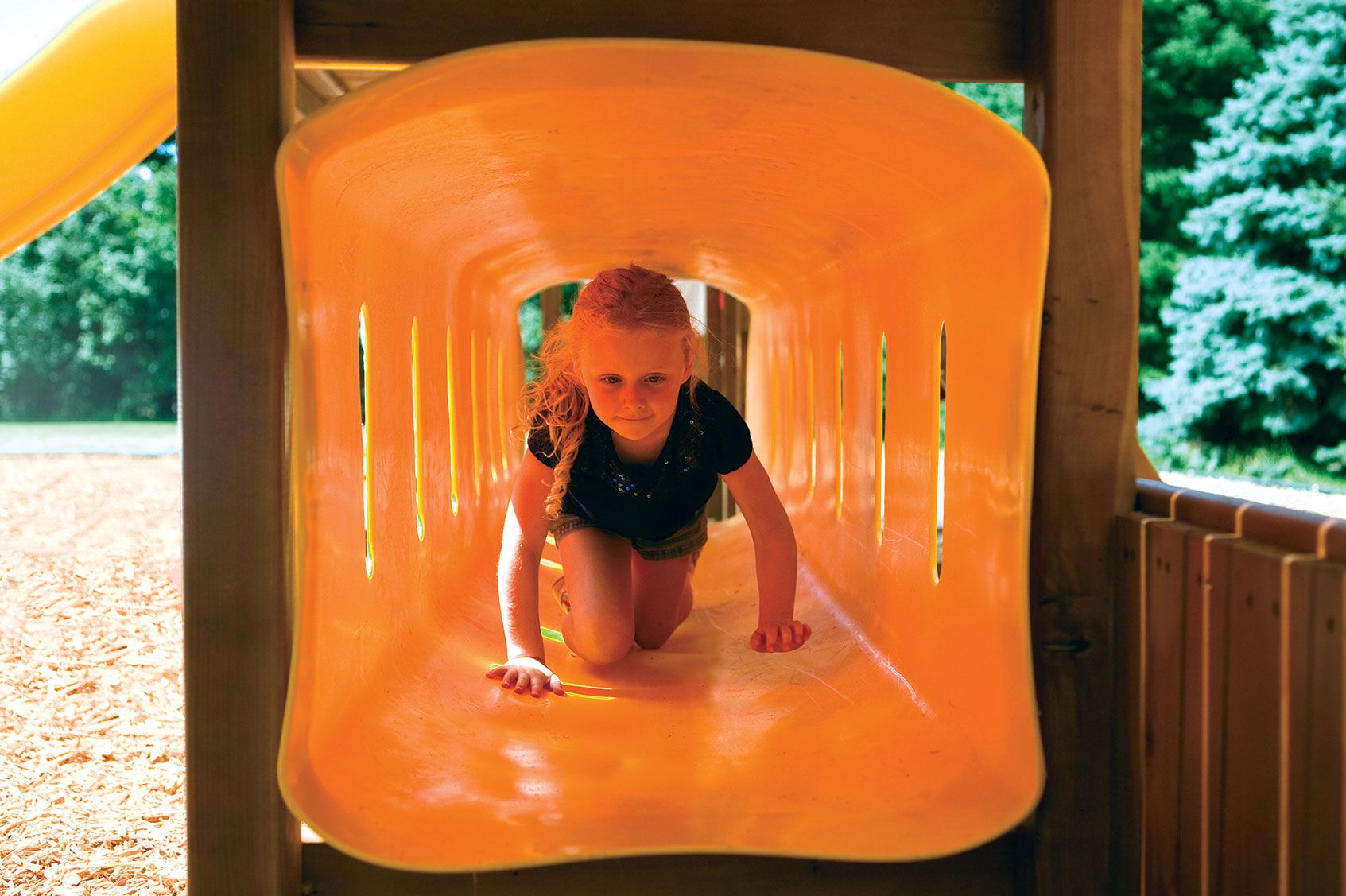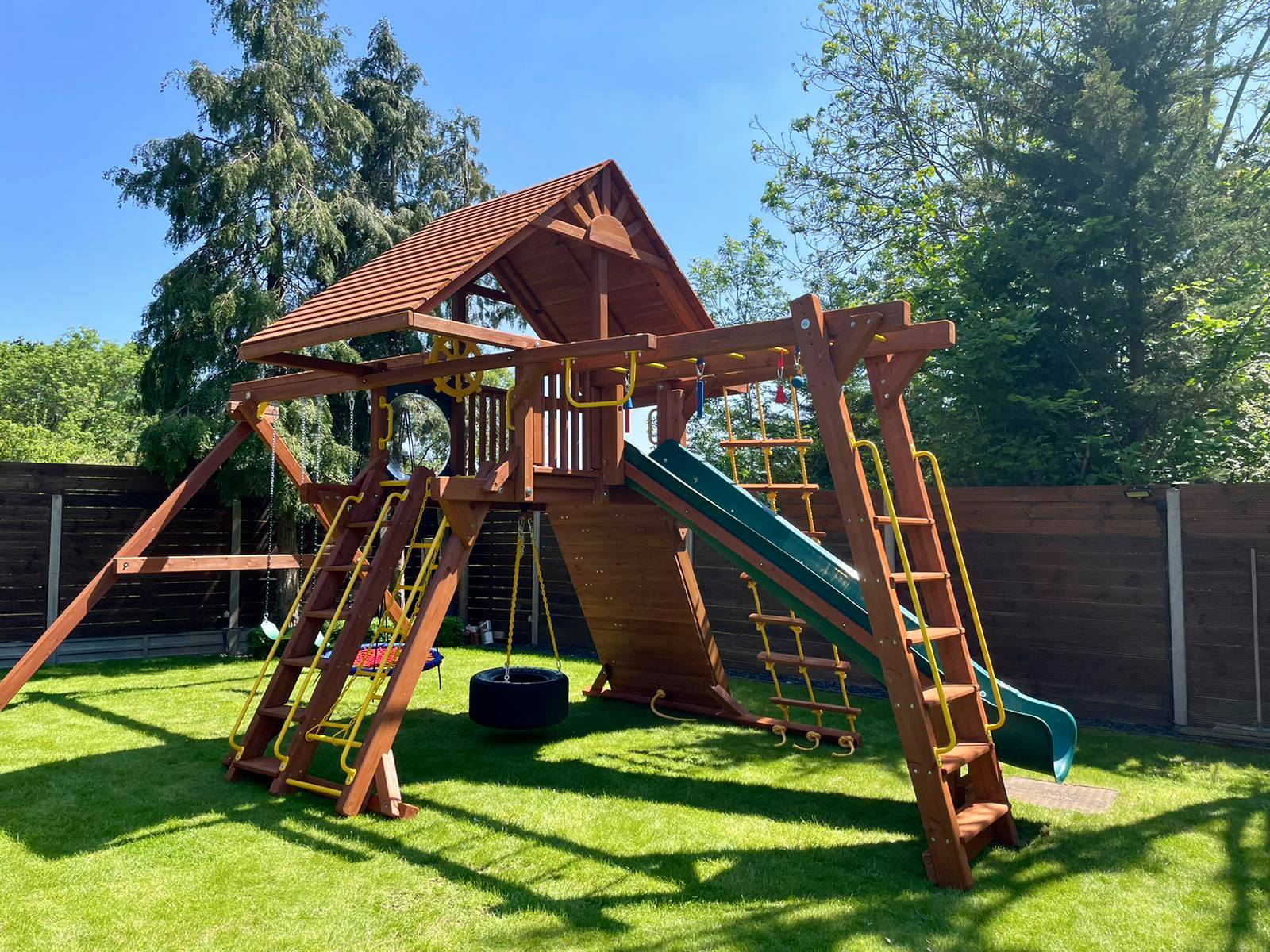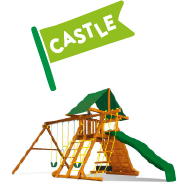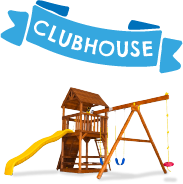Pros and Cons of Building a Climbing Frame on Artificial Grass in the UK
Advantages of Putting your Climbing Frame on Artificial Grass
In the ever-changing British weather, natural grass can become muddy and slippery in rainy seasons. With artificial grass, you have a consistent surface year-round, ensuring that children can play safely without slipping or getting muddy.
2. Low maintenanceUnlike natural grass which requires regular mowing, watering, and fertilising, artificial grass requires minimal upkeep. This means more time for fun, and less time spent on lawn care.
3. Durability
Artificial grass is designed to withstand heavy foot traffic and play. This means it's less likely to become worn out under a climbing frame compared to natural grass which can become patchy and damaged.
4. Cleanliness
With no soil or dirt to contend with, artificial grass reduces the risk of mud being brought into the house after play. It’s also easier to clean up spills or messes on artificial turf.
5. Aesthetically pleasing
Modern artificial grass closely mimics the look of natural grass, so you can have a vibrant green lawn throughout the year, even during the harshest British winters.
6. Safe and padded options
Artificial grass is normally laid on a stone or stone and sand base so can be extremely hard to fall on. Some artificial grass products come with padded underlayers, providing additional cushioning. This can reduce the impact of falls and makes the play area safer for children.

Disadvantages of Putting your Climbing Frame on Artificial Grass
Due to the way that the base for your artificial grass is constructed, anchoring it can be very difficult. The most common types of anchoring systems for climbing frames involve the use of metal stakes which are driven into the ground. This might be very hard or even impossible with some artificial grass sub bases. This is one of the areas that Rainbow Climbing Frames really stand out from the competition. Due to the way they are designed and constructed they don’t need an anchoring system meaning that building them on artificial grass is a very straight forward option.
2. Initial cost
Installing artificial grass can be more expensive upfront compared to natural grass. However, when you factor in the ongoing maintenance costs of a natural lawn, this difference might level out over time.
3. Heat absorption
On very sunny days, artificial grass can become very hot. This could make it uncomfortable for children to play on, especially barefoot.
4. Environmental concerns
Although many strides have been made to produce eco-friendly synthetic turf, it's still a man-made material. It doesn’t provide the same habitat for insects and birds like natural grass and might not be as biodegradable.
5. Drainage issues
While quality artificial grass designs and sub bases do have drainage systems, they might not handle heavy downpours as efficiently as natural soil. This could lead to waterlogging if not installed properly.
6. Lifespan
Though durable, artificial grass doesn’t last forever. Depending on its quality and usage, you might need to replace it after 10-15 years. Natural grass, with proper care, can last indefinitely.
7. Feel
While modern artificial grass is designed to mimic the feel of real grass, some people might still prefer the sensation of natural grass underfoot.

In Conclusion
Choosing to build a climbing frame on artificial grass comes with its fair share of pros and cons. On the one hand, it offers durability, year-round usability, and reduced maintenance. On the other, there are concerns about heat, environmental impact, the natural feel and the ability to anchor your frame.
For UK homeowners, considering the climate and the frequent rains, artificial grass might seem like a good option, especially in areas where consistent lawn maintenance is a challenge. However, individual preferences about cost, environment, and aesthetics will play a significant role in this decision.
It’s really important to do your research before making your climbing frame purchase and to understand that companies differ quite substantially with regard to their anchoring advice. Whatever you decide, ensure that safety remains paramount. If you opt for artificial grass, invest in quality products with good drainage and consider adding a padded underlayer for additional safety. If you choose natural grass, keep it well-maintained and ensure it remains even and free from hazards.
If you would like some advice from our incredibly knowledgeable team please do not hesitate to give us a call on 01276 477461.


